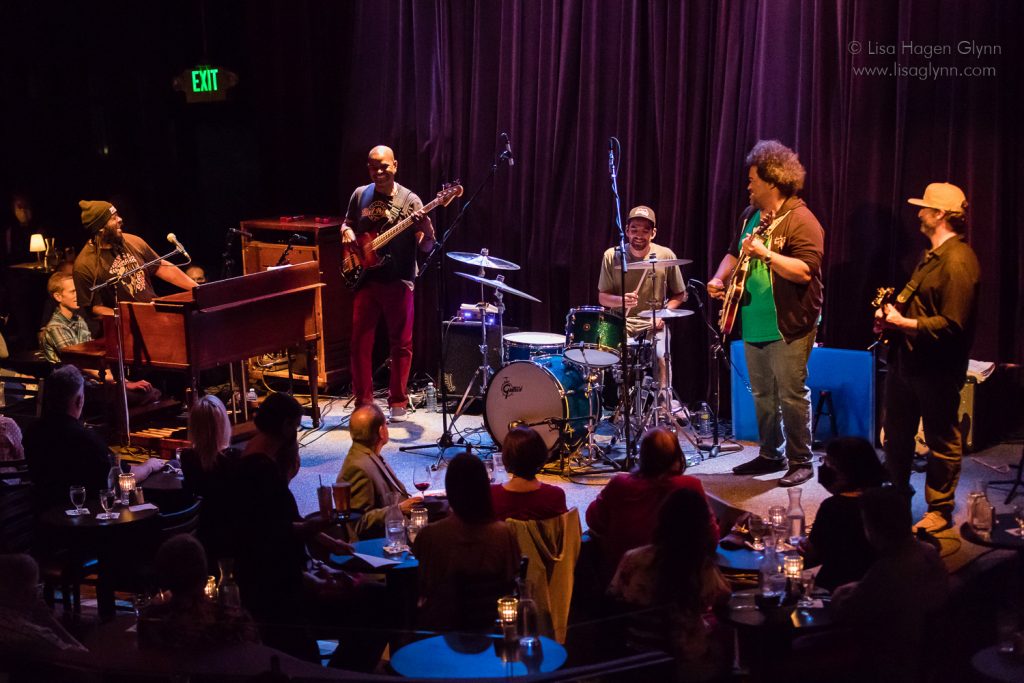
The stage at the esteemed Seattle jazz club, Dimitriou’s Jazz Alley, holds special meaning for local musicians who are brought up through the traditions of the city’s historically vibrant jazz scene. The majority of the performers who grace the Belltown nightspot’s hallowed podium are national and international touring artists, who over the years have included Dexter Gordon, Art Blakey and the Jazz Messengers, Chick Corea, Branford Marsalis, Betty Carter and Cecile McLorin Salvant to mention but a few. On occasion, the club has set aside nights for its resident jazz elite, including the great Ernestine Anderson.
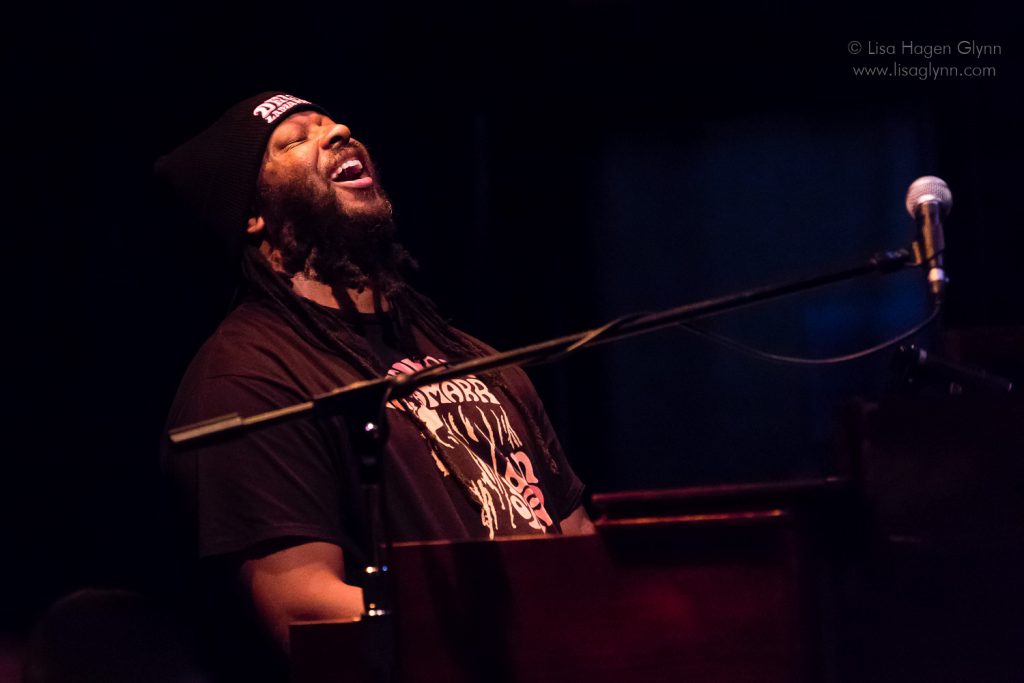
Before the worldwide pandemic brought the live performance world to a screeching halt, Jazz Alley began featuring resident artists on Monday nights (the reference to ‘resident’ artists as opposed to ‘local’ was inspired by Seattle jazz great Julian Priester, who explained that the term local could be interpreted as pedestrian). With live music at the club re-igniting in the summer of 2021, the club decided to take a chance on Seattle’s best, booking Thomas Marriott, Greta Matassa, Marc Seales and Ari Joshua with positive results both in terms of performance and attendance. It was quite striking to see a full club in on every note for Seattle veteran pianist Seales for example, with a band that featured Seattleites Marriott and Jeff Johnson.
The Seattle based Delvon Lamarr Organ Trio took to the Jazz Alley stage to begin a two night, sold out engagement on August 24th, a Tuesday evening with a full house on hand. Many in the audience were about to experience live music for the first time since the pandemic induced shutdown. There was a sense of rejuvenation, of celebration in the room, as Lamarr escorted his mother, brother and sister in law to their table suspended over the stage in the front of the balcony. The soulful R&B and blues guitarist Jimmy James was his usual sharp witted and comical self. “Do you know how to tell if someone is not from Seattle,” he quipped. “When they ask how to get on THE five!” James is all south end Seattle, just as Lamarr’s roots run deep in the Emerald City. New drummer Dan Weiss, who hails from Reno, was getting a full dose of the immensity of the moment, of his Seattle bandmates about to take stage on the city’s most prestigious jazz precipice. The trio had enjoyed a degree of commercial success prior to the shutdown, and had drawn well in their previous visit to the club.
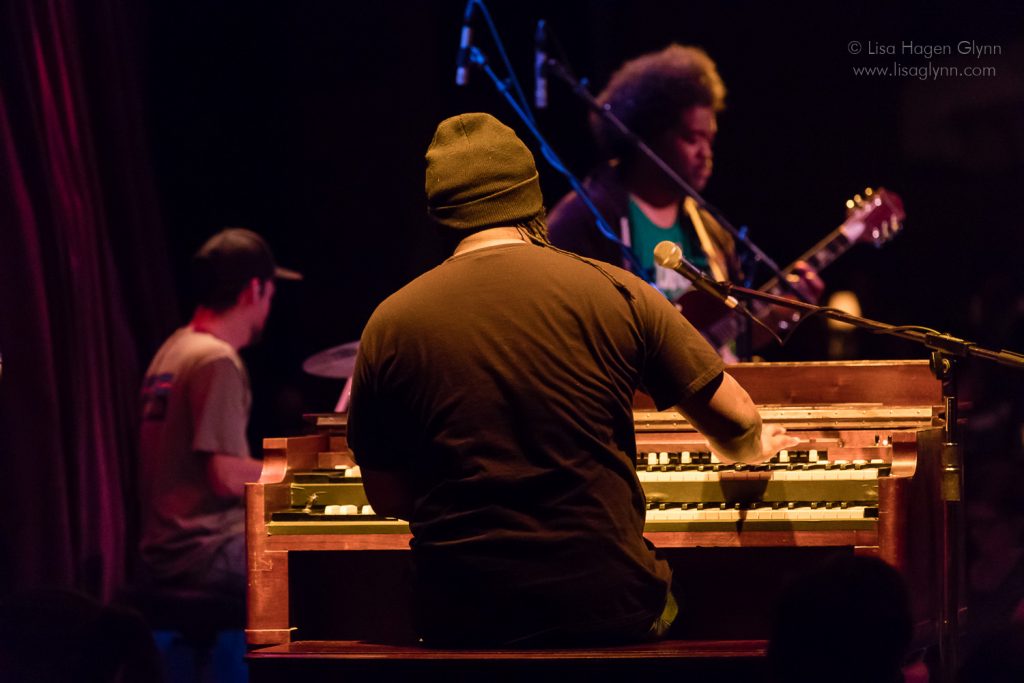
Seattle’s reputation of being a remote and unique cultural outpost is perhaps a bit outdated in its modern incarnation, but nonetheless steeped in historical accuracy. When Jazz Alley opened, it would often feature a national touring artist accompanied by Seattle musicians. In the seventies and eighties, it was common to see such Seattle stalwarts as Chuck Deardorf and Dean Hodges manning the rhythm section for notables like Kenny Burrell or Mose Allison. The resident artists could be found full time at clubs like The New Orleans, or Tula’s beginning in the nineties. But headliners at the old Jazz Alley on University Way, or the current Belltown location, were clearly the exception, not the rule.
Lamarr is what some might refer to as a “natural” musician, one that has an innate understanding of music as a base point for his personal musical progression. In middle school, he came to play in the band by chance, by clearly showing his teacher and mentor Sam Chambliss his ability.
“One day I saw a horn on the floor, and didn’t even know what it was. I told Mr. Chambliss, ‘I can play that.’ He said, ‘Good, I’ll put you in band.’ It was a baritone horn. I picked it up and played it naturally right away. I couldn’t read music, so I would just copy the person next to me. Whatever they played, I played,” he recalls.
Lamarr settled on B-3 after playing drums in the band of Seattle B-3 master, Joe Doria. A year of simply observing his bandleader from behind the kit, allowed him to casually sit down and play the complex instrument.
“I had been watching Joe play it for a year, and literally sat down and played it like I had been playing it my whole life,” says Lamarr.
Lamarr was, and is, a jazz first musician no matter what musical tradition he employs. There is an intuitive eclecticism about his art that transcends form. The influences of his first love, R&B and soul, speaks through his music as well. Taking those elements of his musical personality, and creating a concept that not only would be sufficiently expressive for a genius musician like Lamarr, and as well supply ample opportunity to make a living, eventually became the domain of Amy Novo, Lamarr’s wife, life partner and manager.
“She literally owns DLO3,” exclaimed Lamarr from the Jazz Alley stage that night. “She came up with the idea, and made it happen in every way. I just have to play music.”
Novo worked tirelessly, while her husband created music that would land them with the esteemed Kurland Agency. They found an audience that, like the music, transcended genre. The potent recipe of jazz, rhythm and blues and rock pulled in a sizable crowd that enabled the band to play venues like the Blue Note in New York, worldwide festivals and of course, Seattle’s Jazz Alley. Guitarist James provided the punch that incorporated that which encompasses all of Lamarr’s stylistic indulgences- the blues. The band’s sound has been represented well on the studio albums Close But No Cigar (Colemine, 2018) and I Told You So (Colemine,2021) for Colemine Records, and the live offering Live at KEXP (Colemine, 2018).
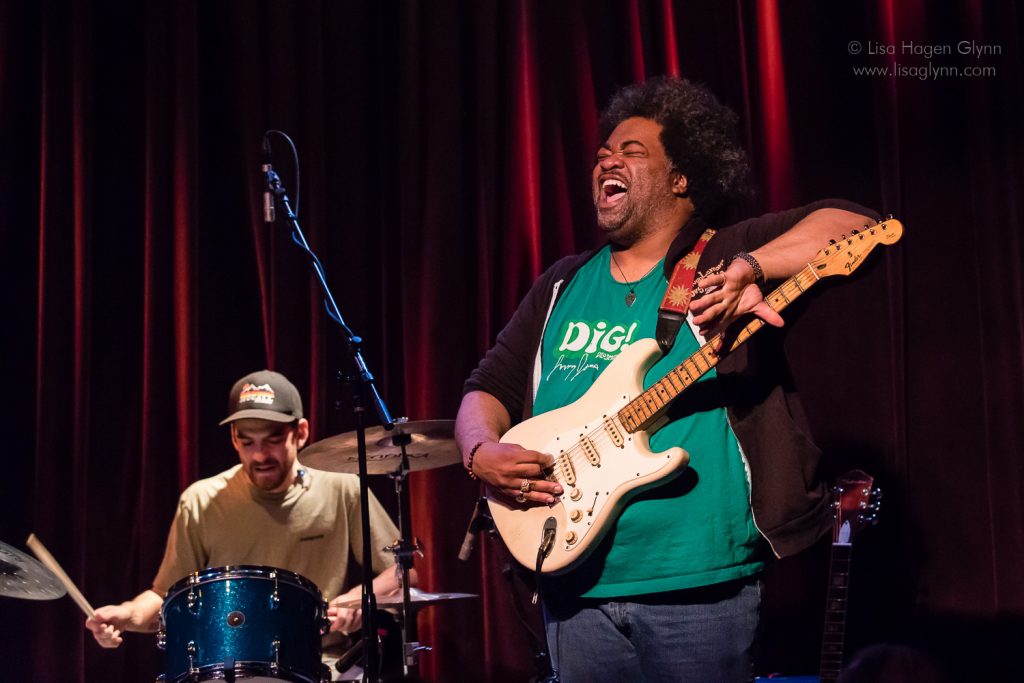
That “sound” has a historical lineage, perhaps unknown to Lamarr at the beginning stages of the band’s development. In the fifties and sixties, Seattle Hammond B-3 artist Dave Lewis had a multitude of hit records with what was being referred to at the time as the “Seattle Sound.” It was instrumental, organ based music, that had markings of jazz, rhythm and blues and the hybrid form taking hold of the airwaves in those days– rock and roll. Lewis’ band would eventually have a huge impact sociologically by playing north end gigs that were the exclusive domain of white bands. This would put an end to musical segregation in the city, which included separate unions for white and black musicians. The unity exhibited by late night jam sessions on Jackson St., now had legal and ethical legitimacy by practice among venue owners. The “sound” would have an impact on Seattle jazz, as well as artists in all blues based styles, including Jimi Hendrix. DLO3 has received a large degree of popularity and commercial success with their own unique organ based sound, that much like Lewis’ combo, is an open door for guest artists to enter and leave their mark. It is a style that is constantly in motion and inviting new musical notions. Whether performing for a sit down audience at Jazz Alley, or accommodating a dance crowd, the band has the unique ability to satisfy multiple audiences, a luxury seldom afforded by jazz artists.
Lamarr’s solo work, and his minimalist comping style, are unmistakingly tied to his roots as a jazz musician. His dual persona in a way, is like an artistic aperture allowing the entire blues tradition into the mix. So much is the same, so much is different. “When I play DLO3 music versus swinging jazz, the approach is completely different. I intertwine the soul with jazz and make sense of it,” he explains. It is not, however, groove dance music, no matter how thick and comfortable drummer Weiss makes that pocket seem. Lamarr’s thought processes arrive musically from the jazz lexicon, smothered in blues based soul and funk. “It’s undeniable that music is better when it speaks to somebody’s soul instead of just hearing a beat,” he points out.
The trio’s open door welcomed in India Arie bassist Khari Simmons, and Polyrhythmic’s guitarist Ben Bloom on this Tuesday evening engagement in Seattle. Relieved of bass line duties, Lamarr is able to ascend as a soloist to new heights, and for two tunes, as a vocalist. Until this opening night in Seattle, Lamarr had never dared to sing in public. He soulfully rendered two new compositions to accommodate this new, very personal revelation. “No Walk in the Park,” and “Can’t Win For Losing,” unmasked the organist’s inner creative sanctum, leaving himself completely vulnerable to an audience that included family, long time friends and some of the city’s top music scribes. That comfortable vibe, that which one feels when surrounded by loved ones, by being home, gathered all the loose ends of the evening into one, enlightened space. The jovial nonchalance of Lamarr’s outward personality, and his deep, soul searching inner musical self came to a singular state of being. This wasn’t another ordinary stop on a long tour–it was Seattle, it was Jazz Alley, this was about neighborhood and being home.
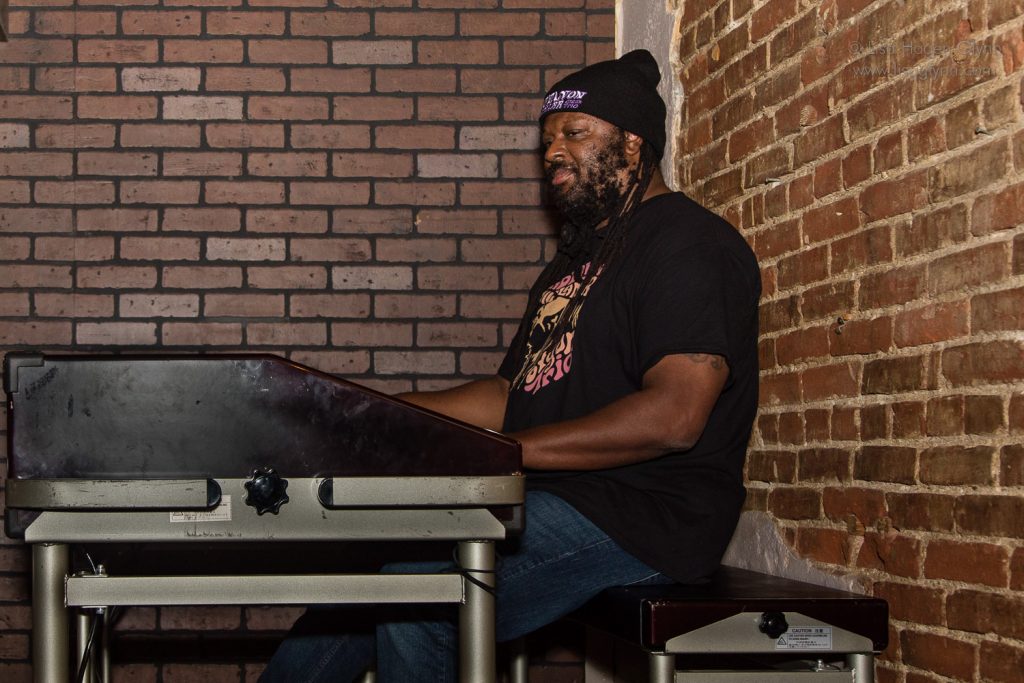
The afternoon preceding DLO3’s opener at Jazz Alley, Lamar and Novo set up a B-3 at the Owl ‘n Thistle, an Irish dive bar in Seattle’s Pioneer Square, with intentions of returning after the Jazz Alley hit to attend a weekly jam session that has taken place at the Owl for more than two decades. The jam is the social focal point of the Seattle jazz scene, and where Lamarr would come to match his chops with the best players in town. In those days, the young Lamarr would play trumpet and drums at the session. Two weeks prior, he had dropped in at the Owl after a gig at Woodland Park, with Novo and Simmons in tow. He played drums a bit, but mostly just enjoyed the hang tremendously. He realized how shut in socially he could be, between touring and ultimately, due to Covid-19. Knowing that he would be playing the house B-3 at Jazz Alley, he set up his own equipment at the Owl, and arrived around 10 PM, just as the house band led by pianist Eric Verlinde was finishing up its set. The trio played a few tunes for the jam packed (pun intended) audience in the small, brick lined room. Soon, Lamarr was at the organ with a rapidly changing cast of musicians at the open session, clearly enjoying himself. While Lamarr is an affable sort, his normal positive self seemed to play into a state of heightened joy and repose. Novo as well sported a look of knowing she was in the right place at the right time. Normally a whirlwind during a gig, dealing with the business portion of the band, she as well could just revel in the sense of normalcy, of fellowship and community, that was so clearly at hand.
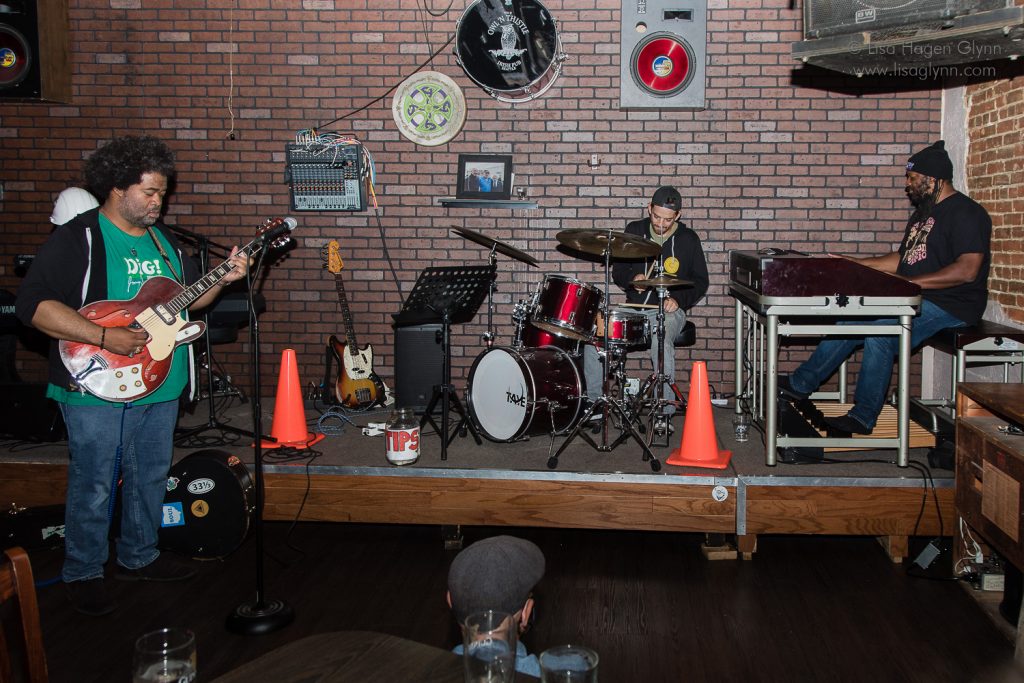
Of course, the evening would end with Lamarr and Novo once again loading one hulk of a musical instrument into their van. There was another night at Jazz Alley to traverse, and whatever else comes literally down the road as things slowly return to normal. There is the uncertainty of the Delta variant, of course, yet over two nights at their city’s most esteemed club, every seat is full, every audience member engaged and content. There is hope in the air, that we will rise above a two year pandemic hiatus, and find our stride musically, and inevitably, socially.
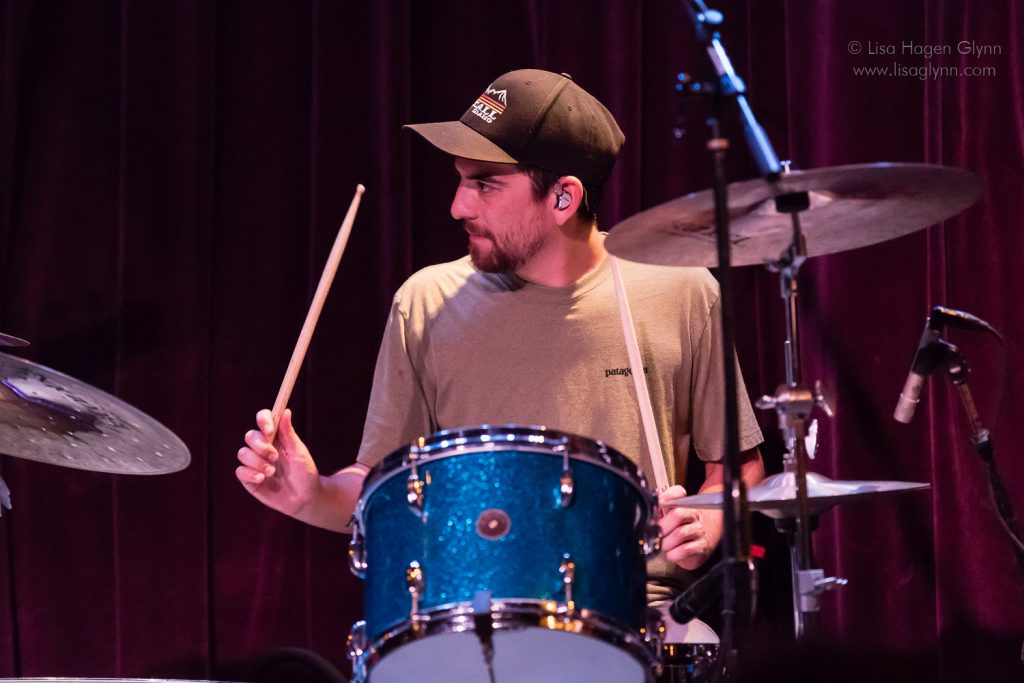
A single evening saw the Delvon Lamarr Organ Trio in front of a full house, and then immersed in the hang, that which in the end really matters. A return to normalcy means so much more than audience being reunited with artist. Rising above the fray of a worldwide pandemic, that place where none of us had ever resided, is more about being reunited with each other. Of feeling that embrace. On one Tuesday evening in Seattle, the Delvon Lamarr Organ Trio and family felt the embrace that only home can bring. —Paul Rauch